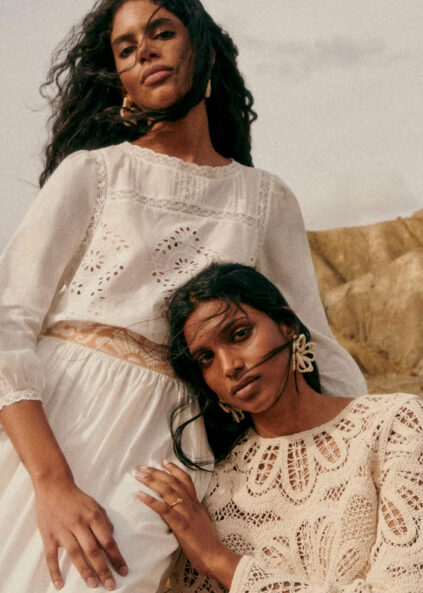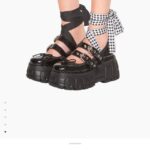Looking to refresh your wardrobe without harming the planet? Choosing the right sustainable fashion brands in the US can make a real difference for your style and the environment.
But with so many options out there, how do you know which brands truly prioritize eco-friendly practices? You’ll discover the best sustainable fashion brands that combine quality, style, and responsibility. Whether you want clothes made from natural materials or companies committed to fair labor, you’ll find brands that align with your values—and make you look great doing it.
Ready to shop smarter and support brands that care? Keep reading to find your new favorite sustainable fashion labels in the US.
Top Sustainable Brands In The Us
Many fashion brands in the US now focus on sustainability. They use eco-friendly materials and ethical production methods. Choosing these brands helps reduce environmental harm. It also supports fair labor practices. Here are some top sustainable brands making a difference in the US.
Pangaia’s Natural Materials
PANGAIA leads with natural, biodegradable fabrics. They use plant-based fibers and recycled materials. Their products avoid harmful chemicals and synthetic dyes. The brand works to lower carbon emissions in production. Each item aims to leave a minimal environmental footprint.
Vuori’s Climate Neutrality
Vuori commits to climate-neutral manufacturing and shipping. They measure and offset all carbon emissions. Renewable energy powers their factories and offices. Vuori also focuses on durability to reduce waste. Their goal is to protect the planet while delivering quality activewear.
Finisterre’s Ocean Focus
Finisterre cares deeply about ocean health. They use recycled nylon and organic cotton in their clothes. The brand supports ocean clean-up projects and marine conservation. Packaging is plastic-free and recyclable. Finisterre’s mission is to reduce ocean pollution through fashion.
Patagonia’s Leadership In Sustainability
Patagonia is a pioneer in sustainable fashion. They prioritize fair trade and organic materials. The company repairs worn-out gear to extend its life. Patagonia donates to environmental causes and promotes activism. Their transparency sets a high standard for the industry.
Eco-friendly Materials Used
Eco-friendly materials form the heart of sustainable fashion brands in the US. These materials reduce harm to the environment and support ethical production. Sustainable brands choose fabrics that use less water, energy, and chemicals. They also focus on materials that can be recycled or biodegrade easily. This approach helps lower pollution and waste from the fashion industry.
Here are some common eco-friendly materials used by top sustainable brands.
Organic Cotton
Organic cotton grows without harmful pesticides or synthetic fertilizers. It uses less water than regular cotton. This cotton keeps soil healthy and supports farmers’ well-being. Clothes made from organic cotton feel soft and last long. Many US sustainable brands prefer organic cotton for t-shirts, jeans, and dresses.
Recycled Polyester
Recycled polyester comes from used plastic bottles and old clothes. It helps reduce plastic waste in oceans and landfills. This material saves energy compared to making new polyester. It also keeps fabrics durable and lightweight. Sustainable brands use recycled polyester in activewear and outerwear.
Tencel And Other Fibers
Tencel is made from wood pulp from sustainably managed forests. It uses less water and energy than cotton. Tencel fabrics are breathable and gentle on the skin. Other eco-friendly fibers include hemp and linen. These natural fibers need fewer chemicals and grow quickly. Many brands mix these fibers to create stylish, eco-conscious clothing.
Innovative Sustainability Initiatives
Many sustainable fashion brands in the US adopt innovative methods to reduce environmental impact. These initiatives reshape how clothes are made, used, and disposed of. They focus on minimizing waste, conserving resources, and supporting ethical practices.
These efforts help create a cleaner, greener fashion industry. Brands use creative programs and technologies to improve sustainability. The following sections highlight key approaches gaining popularity today.
Circular Fashion Programs
Circular fashion programs keep clothing in use longer. Brands offer repair services, take-back schemes, and resale options. This approach reduces textile waste and lowers demand for new materials.
Some companies design clothes for easy recycling. Others encourage customers to return old garments for repurposing. This cycle helps preserve resources and cuts landfill waste.
Reduced Packaging Waste
Many brands reduce packaging to limit plastic and paper waste. They use recycled or biodegradable materials. Some avoid excess wrapping or switch to reusable bags.
Smaller, smarter packaging lowers carbon footprints. It also appeals to eco-conscious shoppers who seek minimal waste options.
Microfiber Shedding Solutions
Microfiber pollution from synthetic clothes harms oceans and wildlife. Sustainable brands develop fabrics that shed fewer microfibers during washing.
Innovations include tighter weaves and natural fiber blends. Some brands promote washing bags that catch microfibers. These efforts help protect water systems and marine life.

Credit: www.oprahdaily.com
Challenges Of Fast Fashion
Fast fashion creates many problems that affect the environment and people. Brands produce clothes quickly and cheaply to follow trends. This causes waste, pollution, and poor work conditions. Understanding these challenges helps us see why sustainable fashion is important.
Impact Of Rapid Production
Fast fashion brands make new clothes very fast. This speed means more waste and discarded items. Many garments are made to last only a short time. This leads to more trash and fills landfills quickly. The rush to produce also lowers quality, hurting long-term use.
Resource Consumption And Pollution
Making fast fashion uses a lot of water and energy. Factories consume large amounts of resources daily. Many materials are synthetic and release microplastics into oceans. Chemicals from dyeing processes pollute rivers and harm wildlife. The industry adds significantly to global pollution.
Labor And Transparency Issues
Workers in fast fashion factories often face unsafe conditions. Many factories pay low wages and have long hours. Brands rarely share full details about their supply chains. This lack of transparency makes it hard to know if workers are treated fairly. Exploitation remains a big concern in the industry.
Zara’s Sustainability Efforts
Zara has made efforts to improve its sustainability practices amid the fast fashion industry challenges. The brand focuses on creating more eco-friendly products and reducing waste. Zara’s initiatives aim to lessen the environmental impact of its clothing lines. These steps show a commitment to progress, even if the brand is not fully sustainable yet.
Join Life Collection Highlights
The Join Life collection features garments made with sustainable materials. Zara uses organic cotton, recycled polyester, and Tencel fibers. These materials reduce water use and lower carbon emissions. The collection also follows strict environmental and social standards. Each piece is designed to last longer and have a smaller footprint.
Repair And Resale Programs
Zara encourages customers to extend the life of their clothes. The brand offers repair services to fix damaged items. This helps reduce textile waste by keeping clothes in use. Zara also tests resale programs to promote second-hand shopping. These efforts support a circular fashion model to cut down on new production.
Packaging And Waste Reduction
Zara is working to minimize plastic use in its packaging. The company uses recycled and recyclable materials for bags and boxes. It aims to eliminate single-use plastics in stores and shipments. Waste reduction programs target both production and retail processes. These actions help lower Zara’s overall environmental footprint.

Credit: amourvert.com
Limitations Of Zara’s Model
Zara is a giant in the fashion world but faces clear limits in sustainability. Its fast fashion model drives quick production and frequent new styles. These features cause high waste and resource use. Zara’s attempts at sustainability fall short of real, lasting change. Understanding these limits helps shoppers make informed choices about eco-friendly fashion.
Fast Fashion Business Constraints
Zara’s model depends on fast production and low prices. This encourages buying more clothes often. It leads to large amounts of waste and pollution. The rapid turnover of styles means many garments are discarded quickly. This model makes deep environmental improvements very hard to achieve.
Concerns Over Greenwashing
Zara promotes collections like Join Life to show eco-efforts. These claims can mask the bigger impact of mass production. Some marketing focuses on small changes rather than true sustainability. This practice is called greenwashing. It can mislead customers about the brand’s real environmental footprint.
Need For Fundamental Change
True sustainability needs a full shift in Zara’s business model. It requires less focus on speed and volume. Transparency about supply chains and labor conditions is crucial. The brand must prioritize quality, durability, and fair work practices. Without these changes, Zara cannot be a leader in sustainable fashion.

Credit: www.marieclaire.co.uk
Frequently Asked Questions
Which Clothing Brand Is The Most Sustainable?
PANGAIA ranks as the most sustainable clothing brand, using natural materials and eco-friendly practices. Patagonia and Vuori also lead in sustainability.
Is Zara Actually Sustainable?
Zara is not truly sustainable due to its fast fashion model driving overconsumption and environmental harm. It uses some eco-friendly materials and recycling programs but struggles with supply chain transparency and labor issues. Overall, Zara’s sustainability efforts remain limited compared to its core business impact.
What Brand Is Gen Z Wearing?
Gen Z favors brands like PANGAIA, Patagonia, and Vuori for sustainable, stylish, and eco-friendly fashion choices.
Is H&m More Sustainable Now?
H&M has improved sustainability by using more recycled materials and launching garment recycling programs. It still faces challenges due to fast fashion’s impact.
Conclusion
Choosing sustainable fashion brands in the US supports the planet and workers. These brands use eco-friendly materials and fair labor practices. Wearing their clothes helps reduce pollution and waste. Small choices create a big impact over time. Start with one brand and grow your sustainable wardrobe.
Every purchase matters for a cleaner, healthier future. Sustainable fashion is both stylish and responsible. Keep learning and making better choices in fashion. The future of clothing depends on conscious consumers like you.






